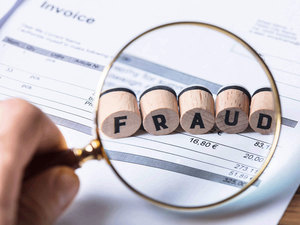Negative Flags in your report are proof of some past mistakes which can ruin your plan. Even though the negative error occurred due to your mistake or negligence on the part of the Credit Bureau, you must take measurable action to rectify it because the credit report affects the most important financial measure one can have, which is the credit score. A Credit Score just does not affect the ability to get a loan or credit card but also determines the interest rate that you pay them.
- There are a total of Seven Negative Flags i.e. issues or pain points which can have the ability to ruin your creditworthiness.
- These are factors that are the reason for lower Credit Scores.
- There are chances to have more than one Negative Flag in one Credit Report.
Let’s go further and discover seven negative flags which can affect your credit history and credit score.
1. Current Balance (Old due)
2. Overdue
3. Settlement
4. Post (WO) Settlement
5. Written–Off
6. Willful Default
7. Suit Filed
Let’s understand in detail so that next time when you come across either of these, you know what might be the reason for it and what can be done to resolve it.
1. Current Balance (Old due)
- It is the amount you still owe on a particular credit facility.
- Lenders typically take 30–45 days after payment is received to update this information to the Credit Bureau.
- For example, you have taken a two-wheeler loan of Rs. 50,000 in 2011, and as of today’s date if some amount is still pending to pay that amount shows in the Current Balance category.
2. Overdue
- A late payment record can pop up on your credit report when you forget to pay or are unable to pay a bill by the due date.
- The creditor can report your late payment to the credit bureaus once you are 30 days due the payment date, and the late payment can remain on your credit reports for a longer period.
3. Settlement
- When a debt is uncollectible by the lending institution, they may agree to settle the outstanding balance in the interest of recovering at least the principal amount.
- The balance amount is waived by the lending institution which indicates the “settle” amount in the Credit Report.
- For example, you owe Rs. 10,000 as a loan, and you have paid Rs. 6,000. The remaining amount of Rs. 4,000 was waived off by the bank which means here you have settled your loan in a lump sum amount of Rs. 6,000, and you will receive Settlement Letter.
4. Post (WO) Settlement
- This status is also similar to the settlement, but the only difference is that settlement is done after the account is written–off.
- In short, the bank has already written off the amount, and after that, the defaulter approached for settlement.
5. Written off
- The objective of a bank in case of a default is to recover the amount. If all the efforts fail and the bank is not able to recover the dues then it is reported as written off (WO). Banks cannot retain NPAs in their book of accounts forever, therefore these types of loans are written off in accounts.
- In short, they are not carried forward.
- The written-off status is subdivided into WRITTEN OFF (TOTAL) and WRITTEN OFF (PRINCIPAL).
- In the case of the total, the 100% amount is written–off including principal and interest.
- In the principal, the total principal amount written off is reported.
- The objective of reporting these 2 sections is to find out written-off interest.
6. Willful Default
- In layman’s terms, willful default means the defaulter has the financial ability to pay and clear the loan, but the default is intentional.
- For example, recently Vijay Mallya was declared a willful defaulter by some of the banks. In short, he has money to pay, but he doesn’t want to pay.
- In such cases, as per RBI’s guidelines, the bank will report either of the following statuses in your credit report.
a) Blank means no suit filed
b) Suit Filed
c) Willful Default
d) Suit Filed (Willful Default)
7. Suit Filed
- It is the status of your loan account. In case, you have defaulted in meeting your repayment obligations, and the bank has filed a case against you, then it would be reported under this section.
In brief, your financial plans depend on your past mistakes. In case any of the above pops out in your credit report, it means there is a need to take some serious efforts to rectify it.
The Reserve Bank of India decided in April 1999 to introduce a scheme under which the banks and notified All India Financial Institutions were required to submit to RBI the details of the willful defaulters with outstanding of Rs.25 lakh and above.
The above scheme was in addition to the Scheme of Disclosure of Information on Defaulting Borrowers of banks and FIs introduced in April 1994, vide RBI Circular DBOD.No.BC/ CIS/47/20.16.002/94 dated 23rd April 1994. The RBI, from time to time, issued several circulars to banks and financial institutions, containing instructions on matters relating to willful defaulters. To enable the banks to have all the existing instructions in one place, a Master Circular dated July 1, 2013, incorporating all the guidelines issued on cases of willful default, was issued.








